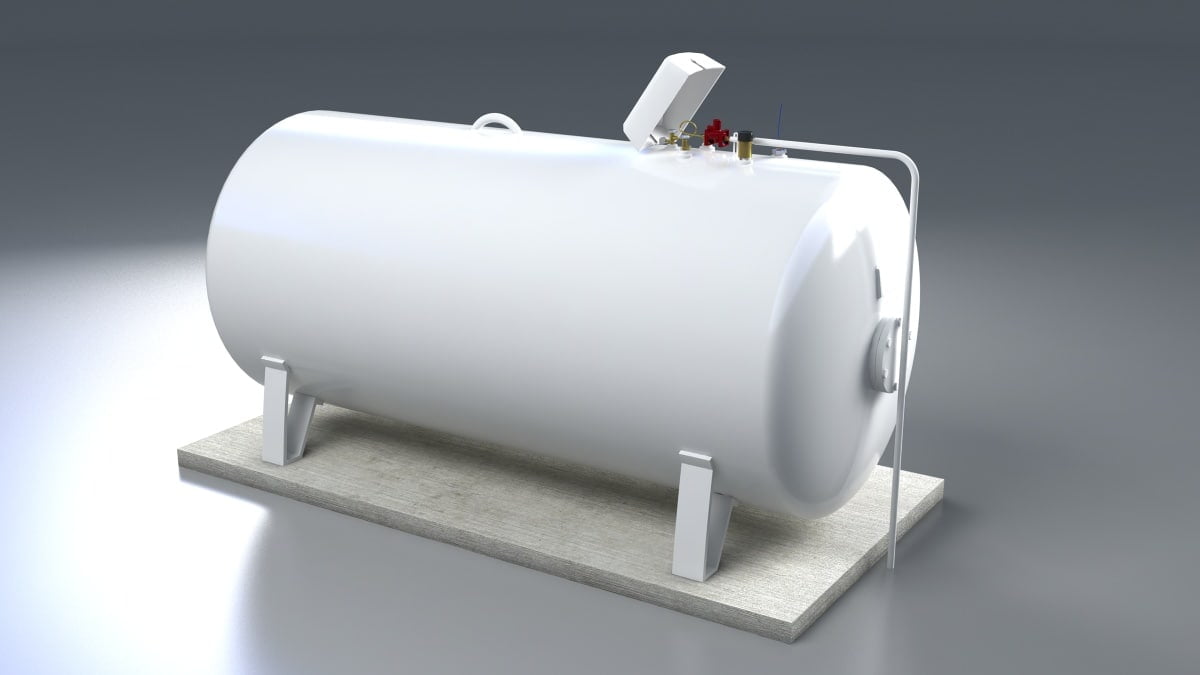Planificarea gradinii pentru primavara
Martie este luna in care gradina incepe sa revina la viata dupa lunga perioada de iarna. Planificarea este un pas esential pentru a asigura o gradina productiva si sanatoasa. Acest proces incepe cu evaluarea spatiului disponibil, stabilirea prioritatilor si alegerea plantelor potrivite pentru climatul si solul din zona ta.
Specialistul in horticultura, Dr. Maria Popescu, recomanda sa incepi prin a face o lista cu plantele pe care doresti sa le cultivi. Aceasta lista ar trebui sa includa atat plantele pe care le-ai avut in vedere in anii anteriori, cat si plante noi pe care vrei sa le incerci. Este important sa iei in considerare cerintele de lumina, apa si sol ale fiecarei plante.
De asemenea, stabileste un calendar al activitatilor de gradinarit. Acest calendar ar trebui sa includa datele la care vei planta semintele sau rasadurile, precum si momentul in care vei face lucrarile de intretinere, cum ar fi udarea, fertilizarea sau plivirea. Un plan bine gandit te va ajuta sa economisesti timp si resurse in lunile urmatoare.
Nu uita sa verifici si sa repari sau sa inlocuiesti uneltele de gradinarit. O unealta bine intretinuta va face munca mult mai usoara si mai eficienta. Asigura-te ca ai la indemana toate materialele necesare, inclusiv pamant, fertilizatori si ghivece, daca intentionezi sa cultivi plante in containere.
Curatarea si pregatirea solului
Curatarea si pregatirea solului este una dintre cele mai importante lucrari de primavara in gradina. Aceasta etapa implica indepartarea resturilor vegetale ramase din anul anterior, precum frunze, crengi si plante moarte. Aceste resturi pot adaposti daunatori si boli, asa ca este esential sa fie eliminate.
Odata curatata suprafata solului, este timpul sa te ocupi de imbunatatirea acestuia. Daca solul este compactat, ar trebui sa-l sapi sau sa-l greblezi pentru a-i imbunatati textura si aerarea. In acest fel, radacinile plantelor vor avea acces mai usor la nutrienti si apa. De asemenea, adaugarea de compost sau ingrasaminte organice va contribui la imbogatirea solului cu nutrientii necesari pentru cresterea plantelor.
Specialistul in soluri, Dr. Andrei Iliescu, recomanda testarea pH-ului solului pentru a determina daca este necesara adaugarea de amendamente. In functie de rezultatele testului, poti corecta pH-ul solului prin adaugarea de var sau sulf. Un sol cu pH-ul corect contribuie la o mai buna absorbtie a nutrientilor de catre plante.
Nu in ultimul rand, asigura-te ca solul are un drenaj bun. Daca solul din gradina ta retine apa, este posibil sa fie nevoie sa imbunatatesti drenajul prin adaugarea de materiale care sa faciliteze scurgerea apei, cum ar fi nisipul sau argila expandata.
Plantarea semintelor in interior
Plantarea semintelor in interior in luna martie este o metoda eficienta de a obtine plante sanatoase si viguroase pentru transplantare in gradina in luna aprilie sau mai. Aceasta tehnica este deosebit de utila pentru plantele care au nevoie de o perioada mai lunga de crestere, cum ar fi rosiile, ardeii sau vinetele.
Inainte de a incepe plantarea, este important sa alegi semintele de calitate de la furnizori de incredere. Asigura-te ca semintele sunt proaspete, deoarece rata de germinare scade odata cu trecerea timpului. De asemenea, citeste cu atentie instructiunile de pe ambalaj pentru a afla detalii despre adancimea de plantare si conditiile de temperatura necesare.
Pentru a planta semintele in interior, vei avea nevoie de ghivece mici sau tavite de seminte, un substrat de calitate si un loc luminos. Substratul trebuie sa fie bine drenat si sa aiba suficienti nutrienti pentru a sustine cresterea plantelor tinere. Plaseaza semintele in substrat, la adancimea recomandata, si acopera-le usor cu pamant.
Asigura-te ca semintele primesc suficienta lumina pentru a germina si a creste. Daca nu ai o fereastra luminoasa, poti folosi lampi fluorescente sau LED-uri special concepute pentru plante. Tine substratul umed, dar nu imbibat, pentru a preveni putrezirea semintelor.
Odata ce plantele au crescut suficient si au dezvoltat cateva frunze adevarate, le poti muta in recipiente mai mari sau le poti transplanta in gradina, daca vremea permite. Acest proces de plantare timpurie iti va oferi un avans semnificativ in sezonul de gradinarit.
Fertilizarea gradinii
Martie este momentul ideal pentru a incepe fertilizarea solului din gradina, pregatindu-l astfel pentru sezonul de crestere. Fertilizarea este esentiala pentru a asigura plantelor nutrientii de care au nevoie pentru a creste sanatos si a produce recolte abundente.
Exista mai multe tipuri de fertilizatori pe care ii poti folosi, iar alegerea acestora depinde de nevoile specifice ale plantelor tale si de compozitia solului din gradina. Fertilizatorii organici, cum ar fi compostul, gunoiul de grajd sau faina de oase, sunt optiuni excelente pentru cei care doresc sa evite produsele chimice. Acestea nu numai ca ofera nutrienti, dar si imbunatatesc structura si capacitatea de retinere a apei a solului.
Fertilizatorii chimici, pe de alta parte, sunt mai concentrati si pot oferi rezultate rapide. Este important, insa, sa respecti dozele recomandate pe ambalaj pentru a evita supraincarcarea solului cu substante chimice, ceea ce poate dauna plantelor si mediului inconjurator.
Dr. Elena Stoica, expert in nutritia plantelor, recomanda testarea solului pentru a determina care nutrienti sunt deficitari si a alege fertilizatorul potrivit. De exemplu, un sol sarac in azot va beneficia de aplicarea unui fertilizator cu continut ridicat de azot. In schimb, pentru un sol deficient in fosfor, este recomandata utilizarea unui fertilizator bogat in fosfor.
Aplicarea fertilizatorilor se face de obicei la inceputul primaverii, inainte ca plantele sa inceapa sa creasca activ. Acest lucru asigura o absorbtie optima a nutrientilor in radacini, contribuind astfel la o crestere viguroasa a plantelor.
Pruning and shaping plants
Pruning is an essential task in March to promote healthy growth and flowering of garden plants. This task involves removing dead, damaged, or diseased branches and stems, as well as shaping the plant to maintain its aesthetic appearance and structure.
Pruning helps improve air circulation and light penetration inside the plant, reducing the risk of fungal diseases and pests. In addition, pruning stimulates the development of new shoots and encourages abundant flowering, especially for shrubs and ornamental trees.
Dr. Victor Radu, a horticulture expert, explains that each type of plant has specific pruning requirements. For example, fruit trees and shrubs are usually pruned in late winter or early spring before the start of new growth. Herbaceous perennials, on the other hand, can be pruned in early spring to remove old, dead stems.
- Prune early-flowering shrubs after they bloom to avoid removing buds.
- For roses, cut back dead or weak stems to promote healthy growth.
- Thin out overcrowded branches to improve air circulation.
- Remove suckers and water sprouts from trees to maintain their shape.
- Use clean, sharp pruning tools to avoid damaging plants.
To properly prune plants, you need quality tools such as pruning shears, loppers, or hand saws. It’s important to disinfect the blades of these tools before and after use to prevent the spread of diseases. Additionally, always make clean cuts at an angle to allow water to run off the surface, preventing rotting.
By following these pruning recommendations, you’ll ensure the plants in your garden grow healthy and beautiful throughout the year.
Installing supports and trellises
In March, it’s time to install supports and trellises for climbing plants such as peas, beans, cucumbers, or ornamental vines. These structures provide stability to plants, allowing them to grow vertically and maximizing garden space.
The supports and trellises help prevent plants from coming into contact with the ground, thus reducing the risk of fungal diseases and facilitating the harvesting of crops. In addition, they improve air circulation and allow better exposure to sunlight, contributing to increased productivity.
Before installing supports, it’s important to choose suitable materials. Wooden or metal stakes, wire mesh, or plastic nets are popular options. When selecting materials, consider the height and weight of the plant species you want to support.
Dr. George Ionescu, a specialist in sustainable agriculture, points out that the proper installation of supports and trellises is essential for their efficiency. Make sure they are firmly anchored in the ground to withstand the weight of the plants and wind. Additionally, consider the spacing between rows and plants to ensure adequate air circulation.
Once the supports are installed, make sure to regularly check and tie the plants to them as they grow. This ensures that plants remain properly supported and avoid damage from bending or breaking. Also, inspect the supports periodically to make necessary repairs or adjustments.
By installing supports and trellises in March, you’ll ensure the plants in your garden have the necessary conditions for healthy and productive growth. This way, you can enjoy abundant harvests and lush floral displays during the growing season.
Mulching the garden
Mulching is a technique that involves covering the soil around plants with a layer of organic or inorganic material. This practice offers numerous benefits for plants and garden soil, helping to maintain an optimal microclimate for growth.
In March, when temperatures begin to rise and the soil begins to warm up, mulching helps retain moisture in the soil, reducing the need for frequent watering. In addition, mulch acts as a barrier that prevents weed growth, reducing competition for resources such as water and nutrients.
There are several types of mulch that you can use in the garden, such as straw, wood chips, leaves, grass clippings, or even decorative stones. Each type of mulch has specific properties, and its choice depends on the needs of plants and personal preferences.
Dr. Laura Mihai, an expert in ecological gardening, suggests applying a layer of mulch 5-10 cm thick around plants, taking care to avoid direct contact with plant stems. This prevents rotting and improves air circulation around roots.
In addition to the practical benefits, mulch also contributes to improving soil structure and fertility. As organic mulch decomposes, it releases nutrients into the soil, feeding the plants and stimulating the activity of beneficial microorganisms.
By applying mulch in the garden in March, you’ll ensure optimal conditions for plant growth and development, reducing water consumption and the time spent on weeding. This way, you can enjoy a healthy and sustainable garden throughout the season.
Controlling pests and diseases
As temperatures rise in March, pests and diseases become more active in the garden. It’s important to implement preventive measures to protect plants and ensure a healthy growing environment.
The first step in pest and disease control is to regularly inspect plants for signs of infestations or infections. Look for yellowing, wilting, or distorted leaves, as well as the presence of insects or larvae on stems and leaves.
If you notice any problems, it’s important to take action quickly to prevent the spread of pests and diseases. There are several methods of control, including mechanical, biological, and chemical options.
Mechanical methods involve physically removing pests from plants, such as handpicking insects or using traps. This method is effective for small infestations and helps reduce the number of pests without using chemicals.
Biological control involves the use of natural predators, such as ladybugs or lacewings, to control pest populations. These beneficial insects feed on pests and help maintain balance in the garden ecosystem.
Chemical control involves the use of insecticides or fungicides to eliminate pests and diseases. It’s important to use these products responsibly, following the instructions on the label and applying them only when necessary to avoid harming beneficial insects and the environment.
Dr. Cristian Popa, a specialist in integrated pest management, recommends adopting a combination of control methods to achieve the best results. By using a holistic approach, you can protect your plants from pests and diseases while promoting a healthy and balanced garden ecosystem.
Sowing directly in the garden
In March, temperatures begin to rise, creating favorable conditions for sowing certain vegetable seeds directly in the garden. This technique allows plants to adapt quickly to environmental conditions and develop strong root systems.
Before sowing, it’s important to prepare the soil by removing weeds, breaking up clods, and leveling the surface. This ensures good contact between seeds and soil, promoting rapid germination.
Some seeds that can be sown directly in the garden in March include radishes, carrots, lettuce, spinach, and peas. These plants are resistant to low temperatures and grow quickly, providing early harvests in the growing season.
When sowing, follow the instructions on the seed packet regarding planting depth and spacing between rows and plants. It’s important to respect these recommendations to avoid overcrowding and ensure good air circulation around plants.
After sowing, water the soil gently to provide the necessary moisture for germination. It’s important to maintain consistent soil moisture throughout the germination and early growth stages to ensure healthy development.
Dr. Ioana Vasilescu, an expert in vegetable cultivation, suggests using row covers or cloches to protect seeds and young plants from low temperatures or frost that may occur in early spring. These protective measures help maintain optimal conditions for germination and growth.
By sowing directly in the garden in March, you’ll benefit from an early start to the growing season and enjoy fresh, home-grown vegetables in a short time.
Monitoring and adjusting irrigation
With the arrival of spring in March, it’s important to monitor and adjust your garden’s irrigation system to ensure plants receive the correct amount of water. Proper irrigation is essential for healthy growth and abundant production of vegetables and ornamental plants.
At the beginning of the season, check the irrigation system for leaks, blockages, or other problems that may affect its efficiency. Clean filters and nozzles, and make necessary repairs to ensure uniform water distribution throughout the garden.
As temperatures rise, adjust the irrigation schedule to meet the water needs of plants. It’s important to avoid overwatering, as excess water can lead to root rot and the spread of fungal diseases. Instead, opt for deep, infrequent watering to encourage deep root growth and increase plant resistance to drought.
Dr. Mihai Ene, an expert in irrigation management, recommends using a drip irrigation system to provide plants with a constant and efficient water supply. This method reduces water waste and ensures it reaches the root zone of each plant directly.
Additionally, consider the specific water needs of each plant species in your garden. Some plants, such as tomatoes and peppers, require more water during flowering and fruiting, while others, such as herbs and succulents, are more drought-tolerant.
By carefully monitoring and adjusting irrigation in March, you’ll ensure that plants in your garden grow healthy, productive, and resistant throughout the growing season.







